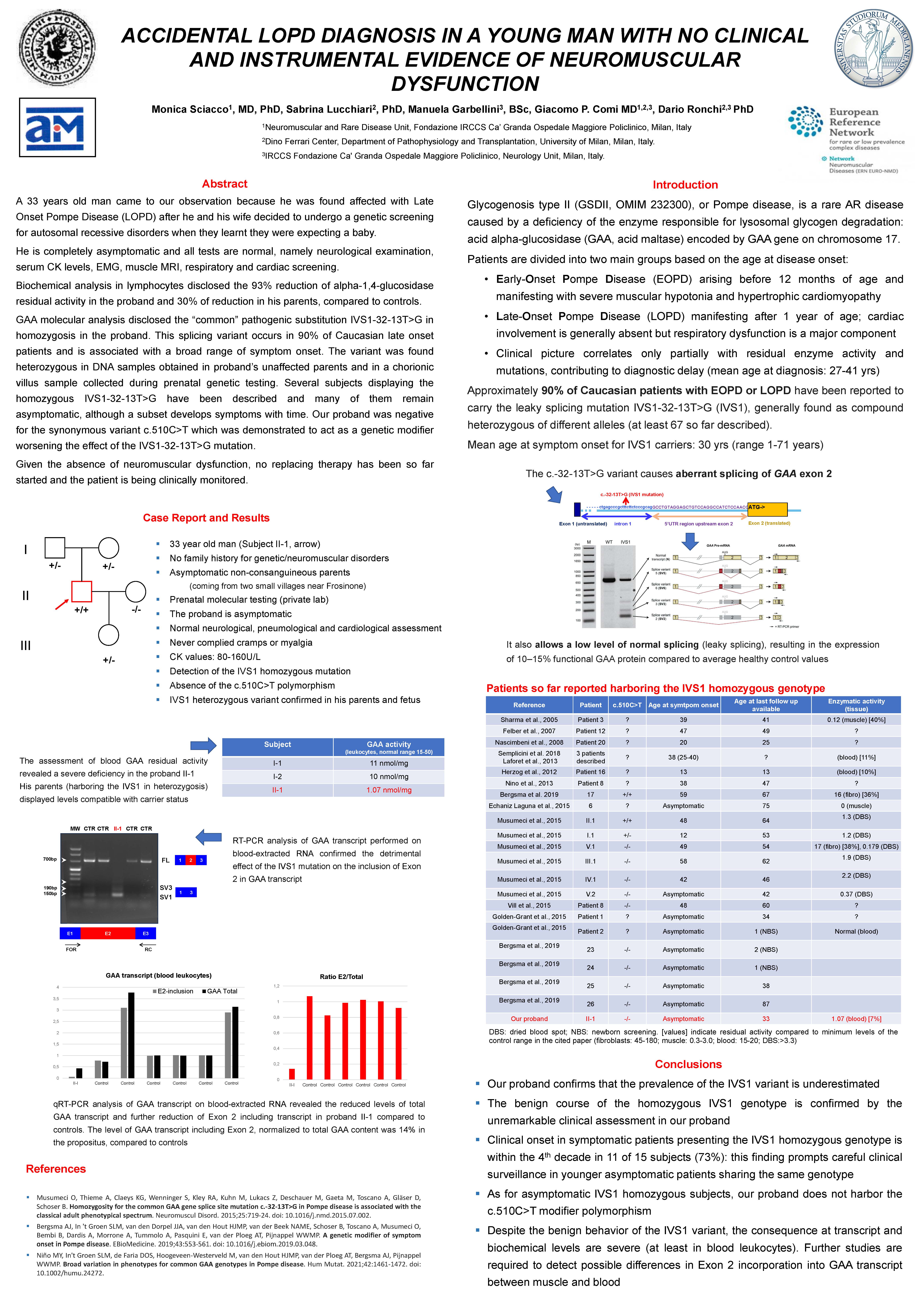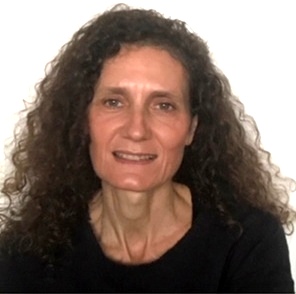


She is a full-time employed at the Neurology – Neuromuscular Unit at Fondazione IRCCS Ca’ Granda Ospedale Maggiore Policlinico di Milano, University of Milan.
Since the very beginning of her medical career she have been dealing with neuromuscular disorders of both adultand pediatric age. As a clinician, she sees patients affected with genetically transmitted and/or acquired neuromuscular disorders (In- and Out-patient Departments, day hospitals) and, also, she is responsible of a Laboratory for the morphological diagnosis of these diseases (skeletal muscle and peripheral nerve biopsies).
She is responsible for the European Reference Network (ERN) for Rare and Neuromuscular Diseases on a mandate from Fondazione IRCCS Ca’ Granda Ospedale Maggiore Policlinico.
Since September 2018, she have been Director of the “Bank of skeletal muscle, peripheral nerve, DNA and cell cultures” part of Telethon Network of Genetic Biobanks (TNGB) e partner of “European Network for Rare Diseases” (European Community).
From 1991 to 1994 she worked as a Postdoctoral fellow at the H. Houston Merrit Clinical Research Center for Neuromuscular and Mitochondrial Disorders, Columbia University College of Physicians and Surgeons, New York, NY, USA developing scientific projects on neuromuscular disorders.
She occasionally works as Courthouse Specialist Consultant in Milan and other national locations.
This poster was presented as part of the Associazione Italiana Miologia (AIM), Padua in June, 2023.
Contact Monica Sciacco about this poster at monica.sciacco@policlinico.mi.it.
Monica Sciacco1, MD, PhD, Sabrina Lucchiari2, PhD, Manuela Garbellini3, BSc, Giacomo P. Comi MD1,2,3, Dario Ronchi2,3 PhD
1Neuromuscular and Rare Disease Unit, Fondazione IRCCS Ca’ Granda Ospedale Maggiore Policlinico, Milan, Italy
2Dino Ferrari Center, Department of Pathophysiology and Transplantation, University of Milan, Milan, Italy.
3IRCCS Fondazione Ca’ Granda Ospedale Maggiore Policlinico, Neurology Unit, Milan, Italy.
A 33 years old man came to our observation because he was found affected with Late Onset Pompe Disease ( after he and his wife decided to undergo a genetic screening for autosomal recessive disorders when they learnt they were expecting a baby He is completely asymptomatic and all tests are normal, namely neurological examination, serum CK levels, EMG, muscle MRI, respiratory and cardiac screening Biochemical analysis in lymphocytes disclosed the 93 reduction of alpha 1 4 glucosidase residual activity in the proband and 30 of reduction in his parents, compared to controls GAA molecular analysis disclosed the “ pathogenic substitution IVS 1 32 13 T>G in homozygosis in the proband This splicing variant occurs in 90 of Caucasian late onset patients and is associated with a broad range of symptom onset The variant was found heterozygous in DNA samples obtained in proband’s unaffected parents and in a chorionic villus sample collected during prenatal genetic testing Several subjects displaying the homozygous IVS 1 32 13 T>G have been described and many of them remain asymptomatic, although a subset develops symptoms with time Our proband was negative for the synonymous variant c 510 C>T which was demonstrated to act as a genetic modifier worsening the effect of the IVS 1 32 13 T>G mutation Given the absence of neuromuscular dysfunction, no replacing therapy has been so far started and the patient is being clinically monitored